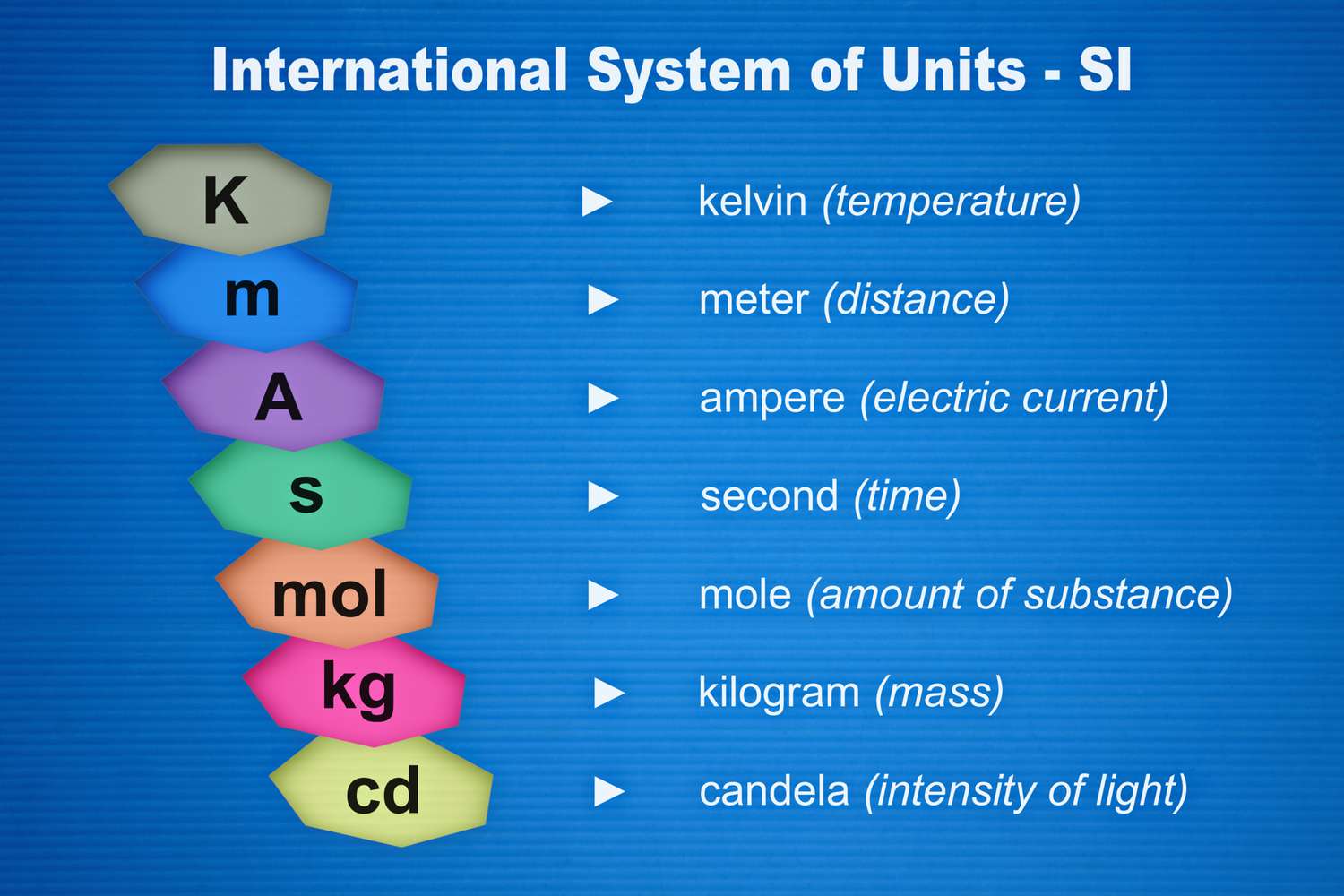
SI unit in physics
An introduction to SI unit in physics
Name: Own Teacher
Email: info@ownteacher.com
Created At: 31-10-2023
What is SI Units List?
There are several SI units used in physics that are used to express the different quantities. The quantities can be classified into two groups i.e. base units and derived units.
SI Base Units
These are the fundamental units and are considered as the building blocks of the system. All the other units are derived from the SI Base units. One of the examples is that the SI unit of mass is kilogram. This is often confused with grams.
SI Base Units List
There are 7 SI base units. The seven units along with their SI unit and symbol are given below:
- Unit of length, meter (m): Meter is the SI unit of length and is defined by taking the fixed value of the speed of light in vacuum. It is expressed as m.s-1.
- Unit of mass, kilogram (kg): Kilogram is the SI unit of mass and is defined by taking the fixed value of the Planck constant. It is expressed as kg.m2.s-1.
- Unit of time, second (s): Second is the SI unit of time and is defined by taking the fixed value of Cesium frequency. It is expressed as s1.
- Unit of electric current, ampere (A): Ampere is the SI unit of electric current and is defined by taking the fixed value of the elementary charge.
- Unit of thermodynamic temperature, Kelvin (K): Kelvin is the SI unit of thermodynamic temperature and is defined by taking the fixed value of Boltzmann constant k = 1.380649×10-23.
- Unit of the amount of substance, mole (mol): Mole is the SI unit of the amount of substance and is defined by the fixed value of Avogadro constant NA. One mole contains 6.02214076×1023 elementary entities and is expressed as mol-1.
- Unit of luminous intensity, candela (cd): Candela is the SI unit of luminous intensity and is defined by the fixed value of the luminous efficacy.
It should be noted that these 7 units are assumed to be mutually independent and hence are called base units.
SI Derived Units
The derived units are unlimited as they are formed by different operations on the base units. For derived units, the dimensions are expressed in terms of the dimensions of the base units. The derived units might also be expressed with the combination of base and derived units.
SI Derived Units List
There are several derived units in physics. Some of the most widely used SI derived units in physics are given below.
| Sl. No | Unit(s) Name | SI Unit | SI Unit Symbol | Expressed in SI Base Unit | Expressed in other SI units |
|---|---|---|---|---|---|
| 1. | Force, Weight | Newton | N | kg⋅m⋅s-2 | – |
| 2. | Frequency | Hertz | Hz | s-1 | – |
| 3. | Electric charge | Coulomb | C | s⋅A | – |
| 4. | Electric potential (Voltage) | Volt | V | kg.m2.s-3.A-1 | W/A |
| 5. | Inductance | Henry | H | kg.m2.s-2.A-2 | Wb/A |
| 6. | Capacitance | Farad | F | kg−1.m−2.s4.A2 | C/V |
| 7. | Resistance, Impedance, Reactance | Ohm | Ω | kg.m2.s−3.A−2 | V/A |
| 8. | Electrical conductance | Siemens | S | kg−1.m−2.s3.A2 | Ω−1 |
| 9. | Magnetic flux | Weber | Wb | kg.m2.s−2.A−1 | V⋅s |
| 10. | Magnetic flux density | Tesla | T | kg.s−2.A−1 | Wb/m2 |
| 11. | Energy, Work, Heat | Joule | J | kg.m2.s−2 | N⋅m = Pa⋅m3 |
| 12. | Power, Radiant flux | Watt | W | kg.m2.s−3 | J/s |
| 13. | Angle | Radian | rad | m.m−1 | – |
| 14. | Radioactivity | Becquerel | Bq | s-1 | – |
| 15. | Luminous flux | Lumen | lm | cd | cd⋅sr |
These were a few widely used units along with their SI units. Apart from these units, there are certain additional units that are commonly seen in physics. Some of such units are:
- The SI unit of momentum (P) is kilogram meter per second (kg⋅ m/s)
- The SI unit of the magnetic field (B) is Tesla
- The SI unit of heat is the unit joule
- The SI unit of velocity is m/s
Students are suggested to be thorough with these aforementioned important physics SI units lists. In the exam, it is important to write the units & dimensions corresponding to the quantity as an answer is considered incomplete without its unit.
Various units and SI units of based articles related to physics are provided here. In physics, there are various terms and quantities. The different quantities in physics can be expressed in various units. Students who want to excel in physics must know the CGS and SI units fluently to score well in their examination. The detailed SI Units and CGS Units are given below to help students understand the respective topic in an effective manner.
Advantages of Learning SI Units and CGS Units
- Questions related to SI Units and CGS Units are very common in physics exams.
- These units are given in an interactive manner and are easily understandable to help the students learn better.
- The units and their explanation will help the students to get an in-depth idea about the respective topics.
- The units are given in points to help students retain the concept for a longer period of time.
Comment List
Leave a Comment.



